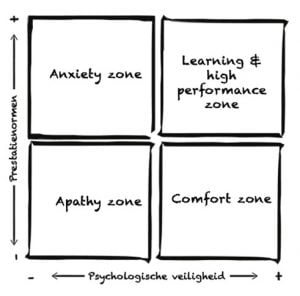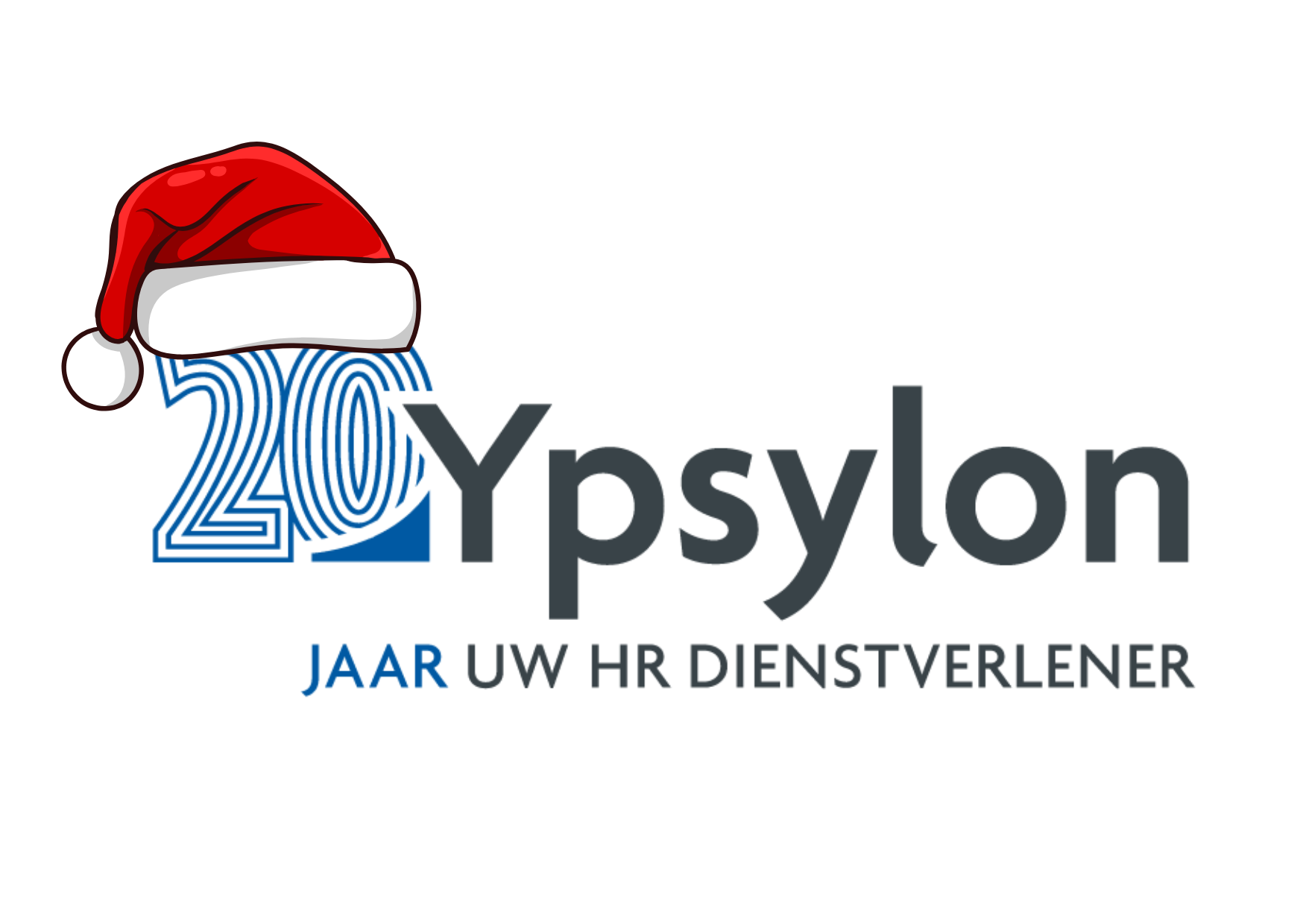How to become a more inclusive organization seems to be on the agenda of many organizations nowadays. In communications on websites, in vacancies and also in legislation, diversity and inclusion are gaining an increasingly prominent place. Through this blog we share concrete tips and tricks to become a more inclusive and therefore future-proof organization. An essential condition for working with such complex and "difficult" topics is that there is Psychological safety within teams.
Hopefully this blog offers new insights that you can immediately apply in your organization.
Psychological safety
You may have heard of it, as the topic has been featured more often in articles and podcasts lately. Psychological safety within organizations stands for the belief that someone is not judged by speaking up, by asking questions, expressing concerns and making mistakes. The lack of this is more a rule than an exception within organizations. There are numerous examples where there is a so-called fear culture or a gossip culture within organizations. Within these types of organizations, mistakes are punished, there is little courage to put forward new ideas and they adopt a defensive attitude. Such an environment is also referred to as "toxic" and hinders the effectiveness of the team and the opportunity to grow and improve.
'A toxic work environment hinders teams to grow and improve'
What I’ve described here might sound a bit extreme, but I think we all know examples of meetings where few questions are asked, certain people always have the floor, out of the box ideas are not given a chance and the best performers are given full credit.
The theory
In 2015, Google did a nice research into what determines Team Effectiveness with the name Aristotle (named after the scholar who said that the whole is more than the sum of its parts). The research found that it wasn't about things like seniority, IQ or making the slightest mistakes. Five key criteria emerged, whereby Psychological safety was the most important condition for the high performing teams. The other four aspects that emerged; mutual dependence, structure and clarity, meaning (purpose) and impact only have meaning if this basic condition is met. Amy Edmonson, a professor at Harvard Business School, has conducted several studies of effective teams. In her Tedtalk (Building a psychologically safe workplace | Amy Edmondson | TEDxHGSE – YouTube) she gives a clear explanation of how she conducted her research. Her research showed that high-performing teams make more mistakes. She could not properly place these results at the start. She later found out that these well-performing teams dared to discuss mistakes earlier.
´Better Teams make more mistakes´
´Better Teams are more open to discuss problems´
Many of you will recognize that you don't always say what you think in a meeting. Afraid of what others think of your question or comment. We also call this self-protection. The following illustrates what behavior this leads to:
- We do not ask questions so that we do not appear ignorant.
- We do not admit weaknesses or mistakes, then we avoid appearing incompetent.
- We keep our ideas to ourselves that prevents us from coming across as too pushy.
- We do not contradict our manager, which ensures that we do not break the status quo.
The consequence of such (common) behavior is that teams deprive themselves of the opportunity to learn and to innovateOn the other hand, there are workplaces where people are willing to take these interpersonal risks. The focus is not on self-protection, but on learning and improving as an organization. Psychological safety is involved in these types of workplaces.
Amy Edmonson indicates that if the work involves uncertainty about the outcomes of results and there is mutual dependence within the team, you want everyone to participate fully and contribute to the best result. Psychological safety is essential in such situations. Since we are talking about the transition to a more inclusive organization here in this blog, it should be clear that it concerns a topic where there is certainly an uncertain outcome and mutual dependence. So we need everyone's contribution to achieve the best result.
'We need everyone's contribution to get the best results if you want to become a more inclusive organization'

Amy Edmonson shows through the model on the right in which of the four stages a team can be active. This involves either a low or high performance standard and a low or high degree of Psychological safety.
If teams and organizations want to make optimal use of the knowledge, experience and motivation of employees, they should enter the learning zone .
In a recently listened BNR podcast, another relevant point emerged in the context of Team Effectiveness. The weakest link in a team was described as the person who has the greatest negative impact on Psychological safety within the team. The "assholes" in ordinary human language, and everyone often knows who is meant by that.
'They undermine the feeling of mutual trust and thereby cause damage, so that there can never be a learning zone'
Unfortunately, it may also be the case that these assholes are very good performers. In almost all organizations, these people receive the most appreciation and the highest rewards. Such individual behavior is rewarded and even encouraged by management. The starting point is that the productivity of one person is never more than the productivity of the team as a whole. In theory, this means that it is better to say goodbye to the high performer – read - the rotten apple, so that Team effectiveness is increased.
TIPS & Tricks
What can you do in your organization to increase Psychological safety? And how do you impose the condition for working on a more inclusive organization?
First of all, within the management and the leaders within the teams there must be a clear vision and conviction about the added value and importance of an inclusive organization. You will then have to pay attention to this within all teams in order for the transition to succeed. Psychological safety is the precondition for actually working on concrete results in this area.
- As an organization, the management team and within teams you have to take a position about what kind of organization or team you want to be - is the emphasis on individual performance, or do you want to be a team that helps each other to learn, improve and achieve top performances together;
- Define the current standards of interaction within the team. To what extent are these desirable and do they contribute to psychological safety? What adjustments can you initiate as a team to get into the 'learning zone'? (see also point 5);
- See the task (work) as a learning goal and not just as a performance goal. As long as the work involves uncertain outcomes and mutual dependence to achieve good results, everyone's input is needed. This certainly applies to goals in the context of diversity and inclusion;
- The manager has a key role and must believe in the concept of Psychological safety to promote team effectiveness;
- The manager should set the right example to get the conversation going - Lead by example!
-
- Admit your own mistakes, fears and insecurities;
- Make curiosity the norm and encourage active listening - so no telephones on the table, for example;
- Creating a safe environment. Give everyone the same amount of "airtime" and immediately interrupt when Psychological safety is undermined;
- Encourage an open mindset. Involve everyone in providing input. All ideas are accepted and not assessed;
- Encourage positive feedback and establish feedback rules for both the feedback and the recipient. For instance; always constructive, substantive and based on empathy;
It goes without saying that every team member can set a good example, but the role of the manager is essential to actually realize change. If you, as an organization, want to make the transition to a more inclusive organization, you want people to embrace the ideas and you will have to involve everyone fully and engage in real conversations.
Hopefully this blog has given you new information as well as practical tips to help you get started. The next part will follow in a few weeks' time, in which we again offer practical tips for working on the transition to a more inclusive organization.
If you find this blog interesting, follow our company page or email us directly for more information.



